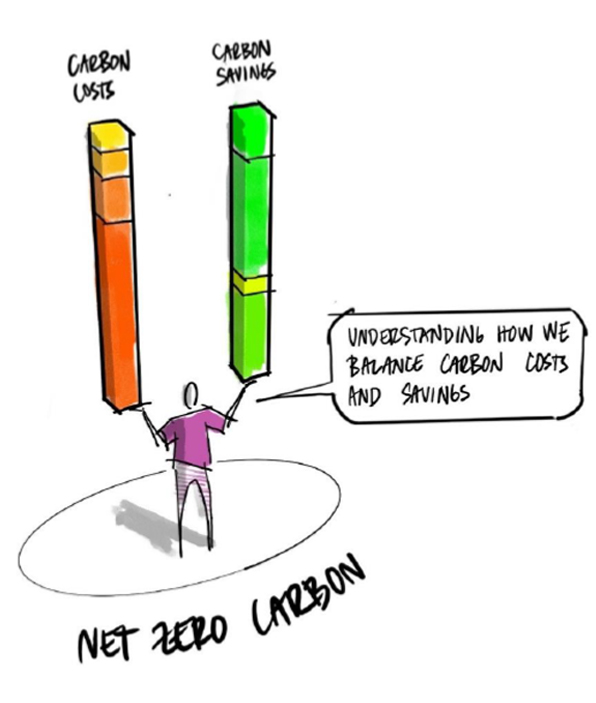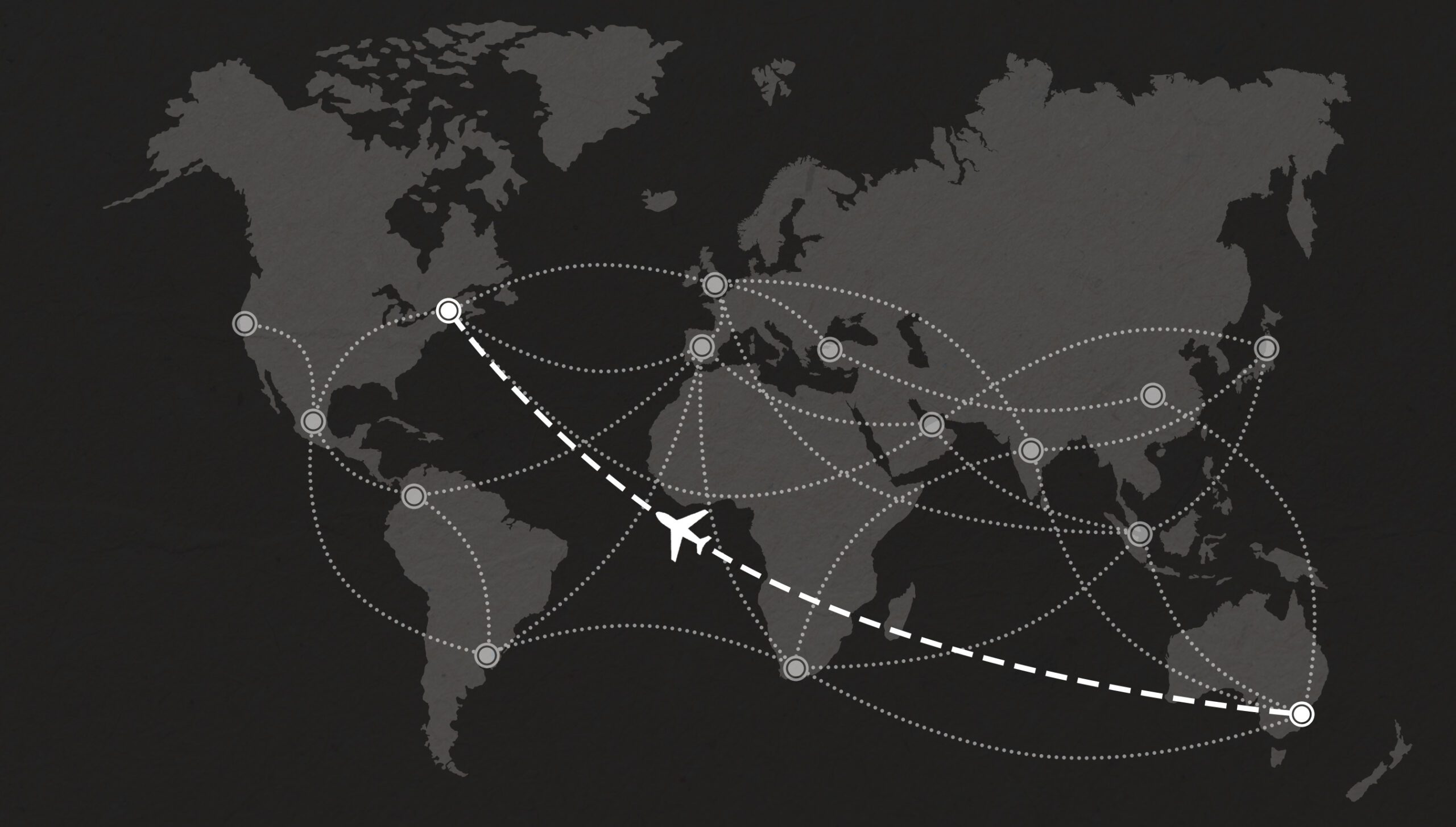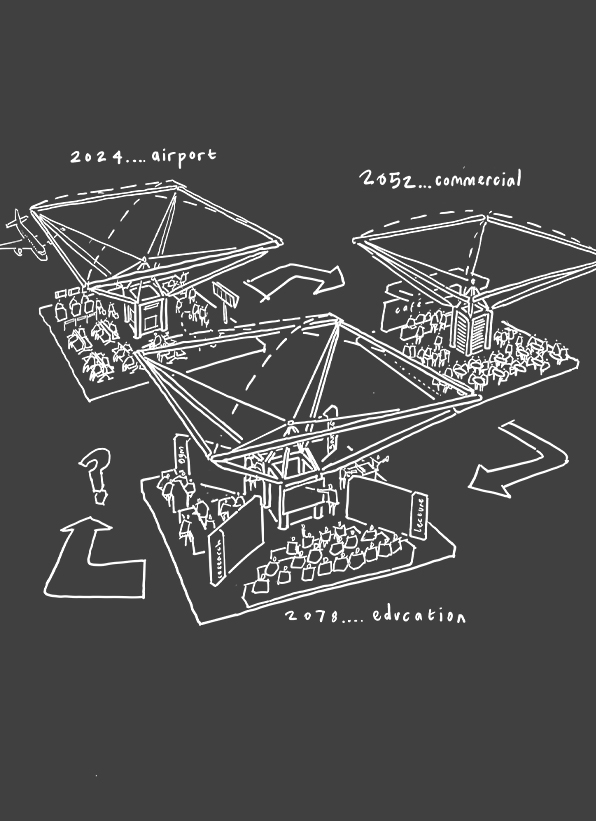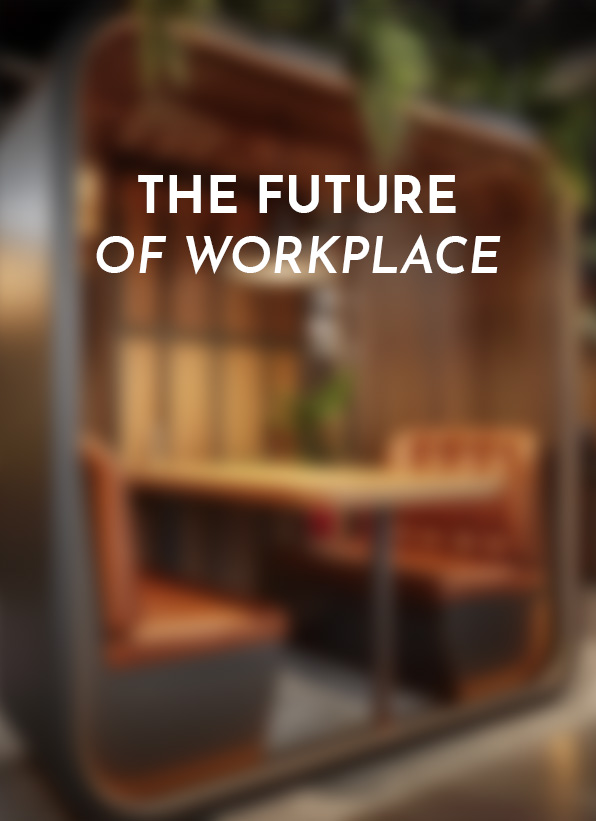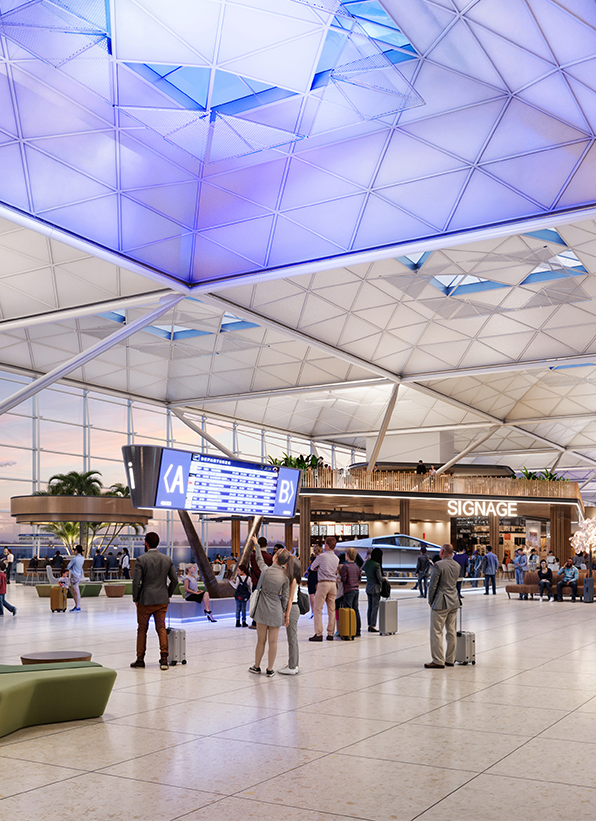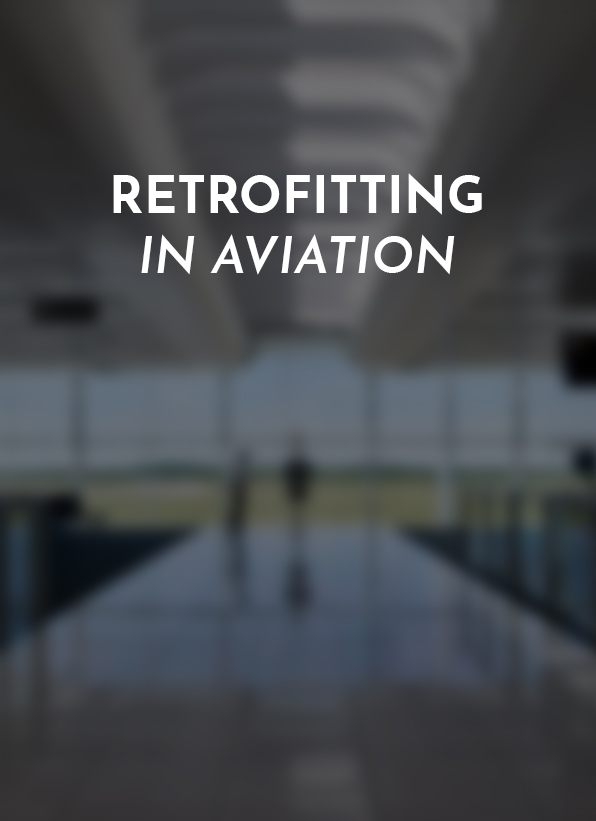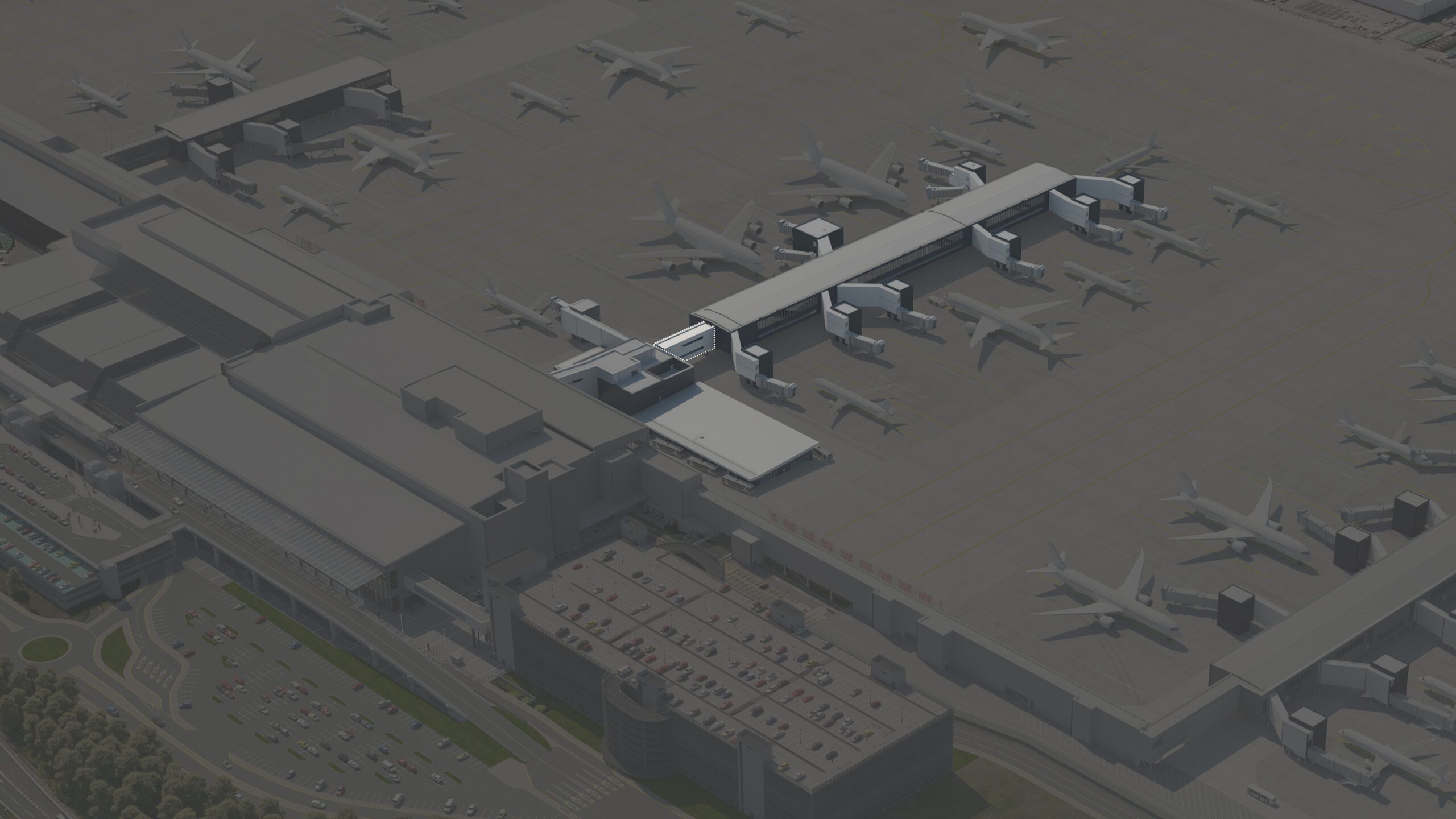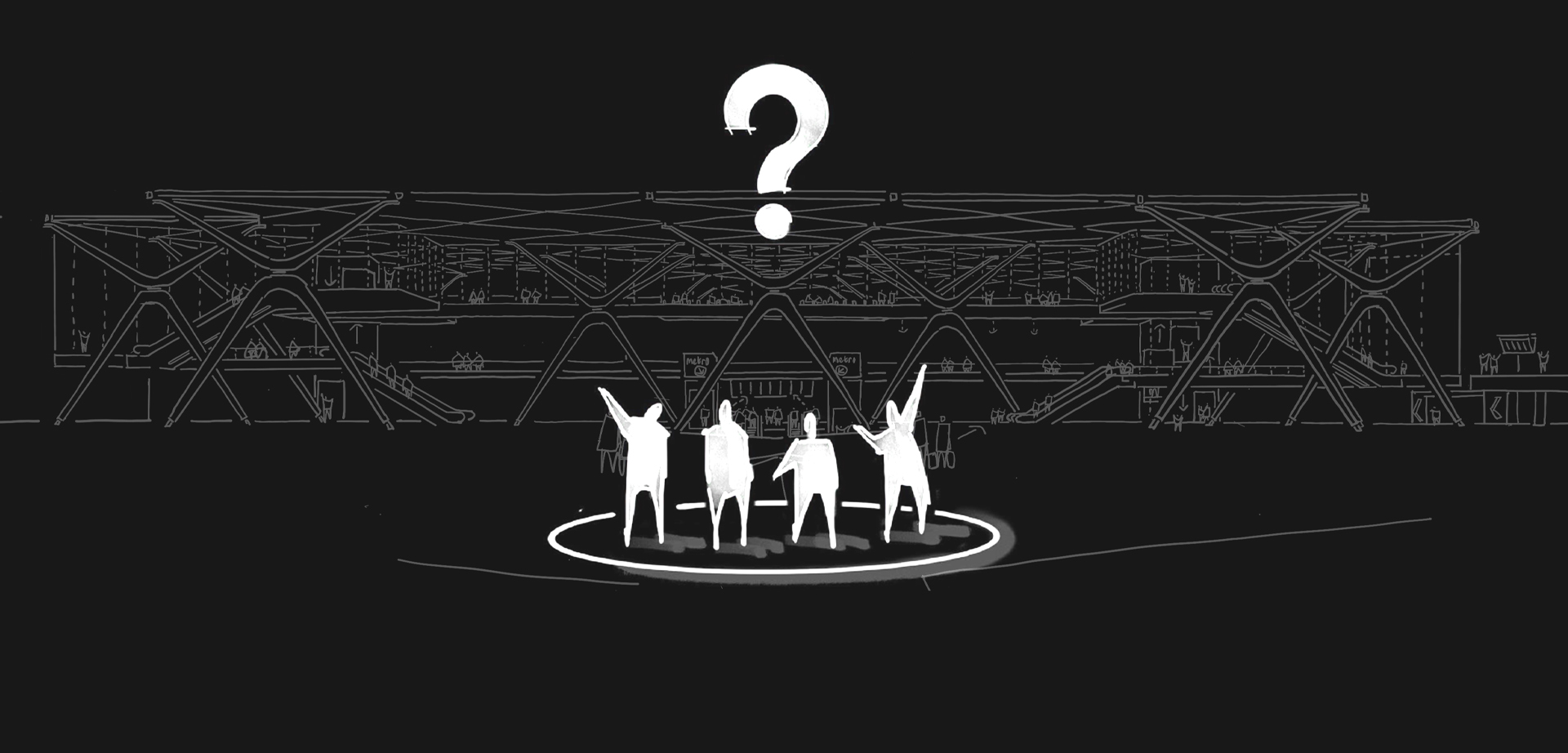what is Net Zero in architecture?
Net-zero, or to be more specific, Net- Zero Carbon (Net Zero) is a huge balancing act of all of the CO2e1 that a building, structure, or place emits or is responsible for over its lifetime versus all of the CO2e that is sequestered, passed on or offset. It is not possible to construct a Net Zero building, only to knock one down as the balancing act is only complete once the building is demolished and the site turned over to a new use. However, we can design for Net Zero, give the building all the opportunity and tools it needs to fulfil this balancing act over its lifetime.
The core components of this balancing act, defined by the RICS Whole Lifecycle Carbon Assessment (A-D)2 can be summarised as:

Phillip specialises in sustainable design and has extensive experience across all stages of large-scale aviation and infrastructure projects.
As a qualified architect since 2012 and RIBA member, Phillip excels in managing multidisciplinary teams within fast-paced environments and has a proven track record of delivering complex projects efficiently. His deep understanding of the transition to a low-carbon future and commitment to innovation make him a key driver of progress in sustainable architecture.
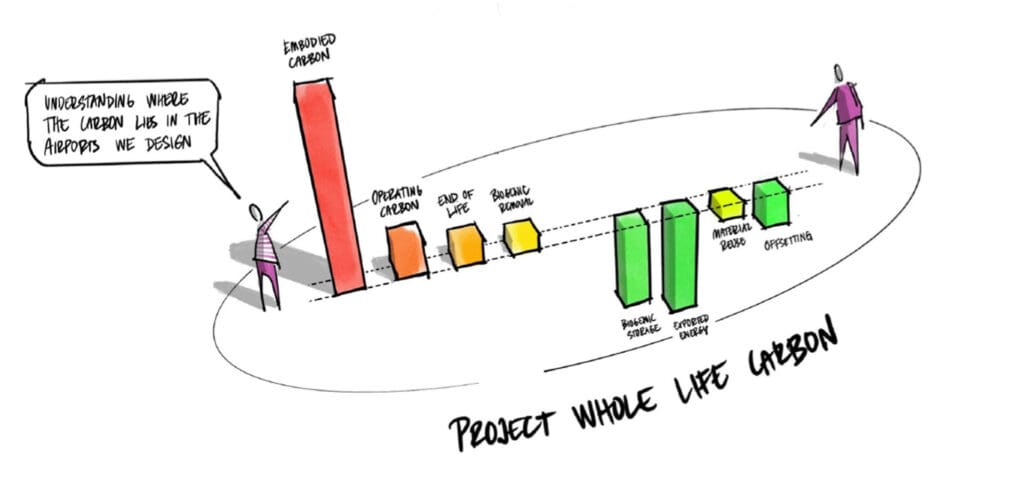
Carbon costs
Embodied Carbon: The CO2e that is locked in during construction, this includes the carbon cost of the materials, including their manufacture and transport, and any other energy costs associated with the construction process.
Operational Carbon: The CO2e that is emitted during the use phase of a building or product. It includes energy / water use as well as any other emissions as a result of management and maintenance. Currently, operational carbon accounts for approximately 28% of all global greenhouse gas emissions; much more than embodied carbon (11%)4 although as energy emissions reduce globally, this balance is expected to reverse.
End of Life Carbon: covers all of the emissions resulting in a product or material reaching the end of its life, and depending on the product can range from the impact of landfill, recycling or transport of materials scheduled for re-use.
Plant Habitat Removal: Simply put this covers the carbon cost of removing any type of vegetation as part of a project, as these plants would have otherwise been absorbing carbon from the atmosphere. This results in an aggregate increase in the carbon impact of the building.
Carbon gains
Exported Energy: In the same way that imported energy is considered as part of operational carbon.
Plant Habitat Storage: The opposite of plant habitat removal, storage is all of the carbon sequestered throughout a projects life time by added vegetation. This storage is most affective where brownfield sites are re-greened, significantly increasing the amount of carbon absorption.
Material Re-use: When a material is reused, the remaining CO2e associated with the rest of its usable design life is transferred with it. This can account for balancing a significant proportion of a project’s embodied carbon, but to achieve this, material longevity and disassembly must be carefully considered.
Offsetting: Although this should always be the final consideration in achieving Net Zero, offsetting whereby carbon is removed from the atmosphere by a project outside of the one being developed, will invariably be required to some extent. Offsetting can be achieved within an airport campus, a local community or internationally.
net zero:
When the carbon costs of a project over its life time balance with its carbon gains, it can be considered Net Zero, and it is this long term balancing act that eventually brings a project to be Net Zero.
It is probably easiest to see the Net Zero journey as a debt, with the embodied carbon forming the initial debt amount, and the operational carbon being the interest paid over time. In order for a project to be debt free by the end of its life, the debt and interest need to be paid down through the carbon gains.
Therefore the key to achieving Net Zero is in reducing the amount that is built in the first place, prioritising re-use (reducing the debt) and extending the design life of all aspects of a project to give the carbon gains as long as possible to balance out the embodied carbon.
In aviation, and more specifically terminal buildings this can become problematic. While parts of a terminal can (and do) have a long design life such as the superstructure, many parts do not. Part of the problem lies in the dynamic nature of airport operations, the need to change for service, capacity or regulatory reasons can make determining suitable design lives very difficult – too short and the carbon cost is high, too long and change may end up bringing in end of life early.
Many advances have been made in the design and construction of buildings on the path to Net Zero, but so far these advances have tended to be outside the aviation sector.
Unlike these more developed sectors which are highly repeatable, terminals tend to be a prototype, a snapshot of current best practice at the time of conception. This makes their design evolutionary, each developing from the last. But if we are going to move terminals towards Net Zero we need to challenge this paradigm.
